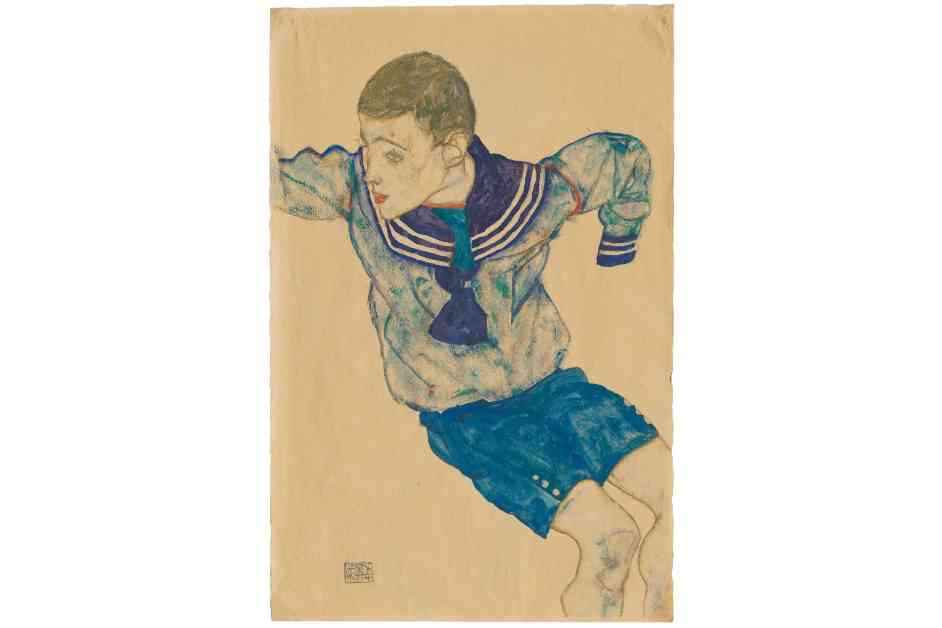Egon Schiele Watercolor Sparks Restitution Debate: A Deep Dive into the $1.9M Auction Value
The upcoming auction of an Egon Schiele watercolor at Christie’s has ignited a fierce debate surrounding its history and rightful ownership. The piece in question, Boy in a Sailor Suit (1914), is at the center of a settlement between its cosigner and the heirs of its original owner, Fritz Grünbaum, a prominent Viennese cabaret performer and writer who tragically perished in a Nazi concentration camp.
A Fascinating Tale of Art, Loss, and Restitution
Grünbaum, the son of an art dealer, had a remarkable collection of over 400 works, including pieces by renowned artists like Rembrandt van Rijn, Albrecht Dürer, Auguste Rodin, and Käthe Kollwitz. However, his vast array of treasures fell into the hands of the Nazis during their annexation of Austria in 1938, leading to a series of legal battles over the rightful ownership of his artworks.
The relentless pursuit of justice by Timothy Reif and David Fraenkel, trustees of the Grünbaum estate, has been a testament to the enduring legacy of those who suffered at the hands of the Nazis. Their efforts, supported by the Manhattan District Attorney’s Office, have led to the recovery or settlement of 12 Schiele works linked to Grünbaum, shedding light on a dark chapter in art history.
A Legal Battle Unfolds
While the restitution of Boy in a Sailor Suit marks a significant victory for the heirs, disputes over other artworks from Grünbaum’s collection continue to unfold. The Art Institute of Chicago has vehemently contested claims of ownership over a Schiele piece in its possession, known as Russian War Prisoner, presenting evidence that challenges the narrative of looted art. The outcome of this legal saga, presided over by a New York Supreme Court judge, remains uncertain, underscoring the complexity of art restitution cases.
Navigating Legal Precedents and Sovereign Immunity
The legal landscape surrounding art restitution is fraught with challenges and complexities, as evidenced by conflicting court rulings in various cases. While some museums have voluntarily returned disputed works to the heirs, others have chosen to contest ownership claims, citing legal technicalities and historical evidence to support their stance. The heirs’ ongoing battles with Viennese museums, such as the Albertina and the Leopold Museum, highlight the global nature of art restitution efforts and the thorny issue of sovereign immunity.
Christie’s Role in Uncovering History
As the auction house responsible for showcasing Boy in a Sailor Suit, Christie’s has played a pivotal role in uncovering the provenance of the artwork and shedding light on Fritz Grünbaum’s remarkable legacy. Marc Porter, Chairman of Christie’s Americas, expressed pride in the Restitution team’s efforts to honor Grünbaum’s memory and raise funds for the Grünbaum Fischer Foundation. The sale of the Schiele watercolor will not only support performing artists but also contribute to charitable projects benefiting children, underscoring the enduring impact of art in shaping a better future.
In conclusion, the upcoming auction of Boy in a Sailor Suit serves as a poignant reminder of the resilience of those who seek justice for the victims of historical injustices. The intricate web of legal battles, moral dilemmas, and artistic legacies intertwined in this story paints a vivid picture of the ongoing quest for truth and restitution in the art world.












